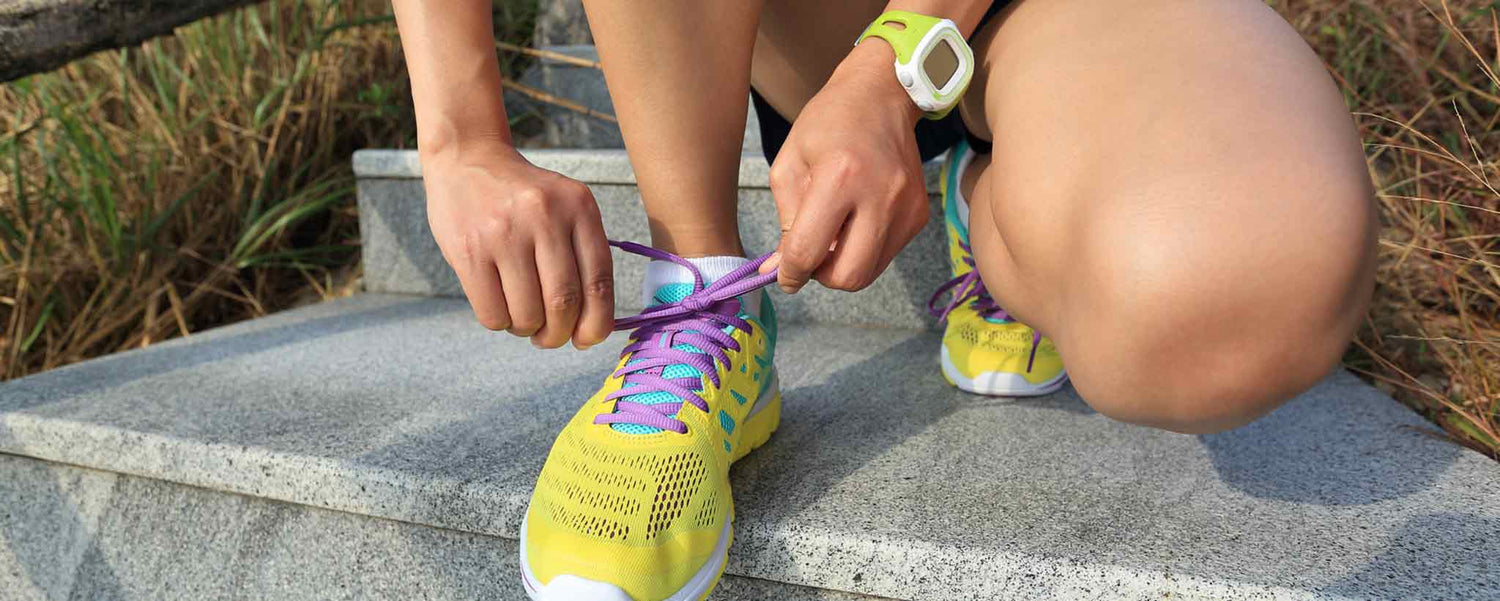A longstanding general goal of 10,000 steps per day is recommended for the average person.
Don’t Saunter, Walk Briskly
Aerobic exercise improves heart function. Maintaining a healthy weight can improve your cognitive function and prevent metabolic syndrome. While research suggests a beneficial increase to 15,000, a longstanding general goal of 10,000 steps per day is common for the average person. That works out to about five miles (8 kilometers).
By contrast, 1,000 to 3,000 steps are considered sedentary. Unfortunately, some desk jockeys fall below that—especially if they spend long hours in front of computers in home offices. According to fitness advisors, a reasonable goal is to increase daily steps by 500 each week, until averaging ten thousand per day.
More than 20 million people in the UK are physically inactive, according to a report by the British Heart Foundation. —BBC News
That having been said, 10,000 steps is a general guideline. The health and circumstances of each individual differ. Any regular fitness is better than none. A person over 6 feet tall with a long stride might strive for 9,000 steps; someone less than 5 feet might aim for 12,000 steps or more. For someone with a leg or back injury, an increase from 300 to 3,000 steps per day is a significant improvement. Obesity can also limit mobility. Those confined to wheelchairs can strive for distance goals.

Get moving! There are many pedometers, fitness trackers, and watches to keep track of your steps for you. Some fit into your shoes; others strap on your wrist or clip onto your arm/waistband. If you have an iPhone running the latest iOS (at least iOS 10), you can count your steps without a watch.
Activate the feature within the Apple-branded Health app. Here is the amazing thing: Your iPhone has already been keeping track; historical data is auto-populated. With most of the other health modules, interaction is necessary. You may need to download an app, register, and launch it to activate settings or enter information.
For keeping track of your steps, just keep your phone with you. It is not as accurate as a wrist-strapped tracker with GPS. But if you keep your phone with you throughout the day, it will give you a reasonably good idea of your steps.
Your iPhone has already been keeping track.

Progressive views within Health app, drilling down from activity to walking (steps).
Motivation to Keep Moving
Other smartphones may have similar features. Here is how to reveal how many steps you have been taking in the Apple Health app:
- Tap the Health icon (red heart within white square).
- Tap “Activity.”
- Tap “Steps.”
- Slide "Add to Favorites"
If you go on a hike or spend time on the treadmill without your phone, you can press the plus sign to add historical data. With an Apple Watch, you can keep track of far more than steps. But if you are just beginning a fitness journey with walking and have your doctor’s approval, all you need is your iPhone and some motivation:
1. Get a new outfit. Superheroes don’t save the planet in three-piece suits and dress shoes. If you look the part, you’ll act the part. Besides, you will be more comfortable in exercise clothing and appropriate foot apparel.
2. Walk with friends. This sounds like a great option until they bail out for whatever reason. Your exercise can include but not depend upon others.
3. Walk a dog. Pets need exercise, too, and dogs eagerly look forward to bonding time. Don’t get into the rut of opening the back door to let them do their business. When walking a dog, remember to keep a brisk pace and a pooh retrieval plastic bag.
4. Eat better. Reward yourself with a healthy protein smoothie after your morning walk. Finish your day with a salad and light dressing. Eat your heavy meal in the afternoon for lunch. When you cheat on your diet, take an extra lap to burn off the calories.
5. Map out a route. If you just open the door and start walking, you may turn around when you get to the corner. This may be fine for a start. Add a little—perhaps 10 percent further—each week. When you have a route—say, around two blocks—there is a goal in sight.
Expect some discomfort; building muscle and losing fat are responses to physical stress on the body. You should reach a point where slow, deep breaths are required and ideally perspire. If you can’t do 30 minutes, then include some hills.
6. Make a schedule. Most smartphones include the ability to set multiple alarms. Set one for morning, afternoon, and evening. A power walk for 10 minutes three times per day is reasonable, even if you get 15-minute breaks at work.
7. Clinch alternating glutei when you walk to create resistance and strengthen muscles.
8. Move faster. During a stroll, you often think of other matters or may fall into the bad habit of texting and emailing while barely moving. Walk as fast as you can or jog if your health permits. If you want to use your phone during workouts…
9. Listen to music. Whether you are just starting or have chronic pain, concentrating on discomfort is a killjoy. To keep your stride, pump some motivating music through your earbuds with a strong beat. Remaining aware of your surroundings will keep you from bopping your head into an automobile bumper. If you like music, you can pump up the sounds while cleaning your house and occasionally busting a move.
10. Step on the scale. The visual weekly reward of shedding pounds can be a strong motivator.
11. Track your steps. As previously mentioned, the Health app keeps track of steps for you. It is not in real time, and there are some false positives based on arm gestures. But as the steps increase significantly, it is more accurate. So keep your phone with you—even when walking around in your home.
Hit the Gym or Hit the Streets
Fresh outside air is better than indoor air unless the outdoors near you is polluted. Exhaust fumes or bellowing pipes from nearby oil refineries make purified recycled air an attractive alternative. If you have problems with your bones—back, hips, knees, or ankles—a treadmill can provide a better surface than a concrete sidewalk. Treadmills can also track biometric vitals such as heart rate. For that matter, so can most fitness trackers with a one-time payment.
All things being equal, the least expensive option is often better than monthly subscriptions—at least until you develop a routine. If you can’t get outside because of illness or some other reason, charge your phone overnight so you can carry it with you as you perform activities around the house.
Is weight loss your goal? According to Dr. David Williams: “If you start exercising with a belly full of carbohydrates (or one of the high-carb energy drinks in your hand), your body will use that for fuel and never have to burn any extra body fat or glycogen stores. Protein and fat take longer to digest, and when consumed immediately before exercise, they won’t get into the system quickly enough to be used as the primary source of energy. After 45 minutes to an hour of hard exercise, protein will start to be available for muscle repair and growth.”
Have you taken steps to be healthier this week than you were last week? Can you break the 3,000-step sedentary barrier? Are you approaching a 5,000-step goal? Will you shatter the 10,000-step average? It all begins with your first step. If you frequently get through the day and realize your phone is on the charger, you may benefit from wearing a fitness tracker.
To support the writing of useful articles about fitness, ClinicalPosters sells human anatomy charts, scientific posters, and other products online. You may sponsor specific articles, become a ClinicalNovellas Member, or remit a small donation.
ClinicalPosters sells human anatomy charts, scientific posters, and other products online to offset expense of the writing useful articles about fitness. Slide extra posters into DeuPair Frames without removing from the wall.
Show your support by donating, shopping for ClinicalPins, becoming a ClinicalNovellas Member, or leaving an encouraging comment to keep the research going.
To support the writing of useful articles about fitness, ClinicalPosters sells human anatomy charts, scientific posters, and other products online. You may sponsor specific articles or remit a small donation.
ClinicalPosters sells human anatomy charts, scientific posters, and other products online to offset expense of the writing useful articles about fitness. Slide extra posters into DeuPair Frames without removing from the wall.
ClinicalPosters sells human anatomy charts, scientific posters, and other products online. You may remit a small donation or become a ClinicalNovellas Member.
You can support the writing of useful articles about fitness by sponsoring specific articles, becoming a ClinicalNovellas Member, or remitting a small donation. Visible content is optimized for device size.








